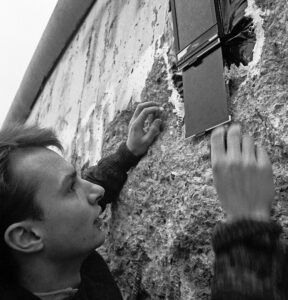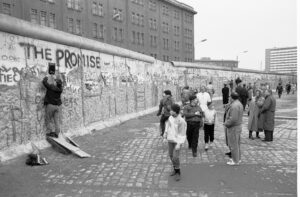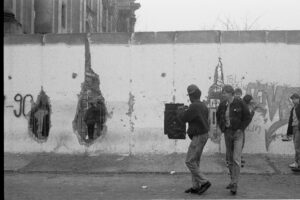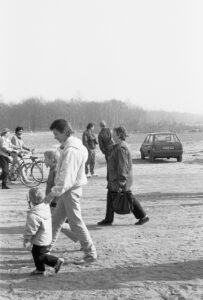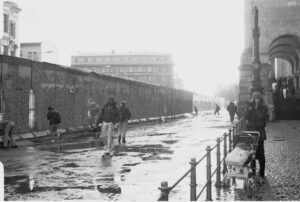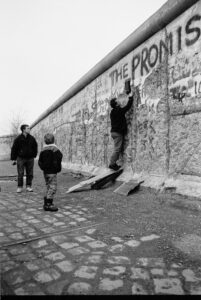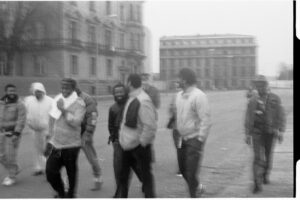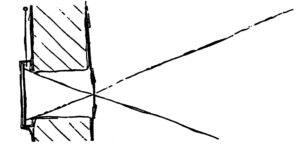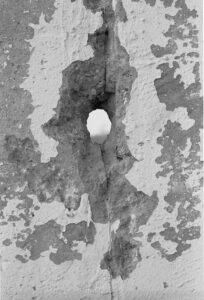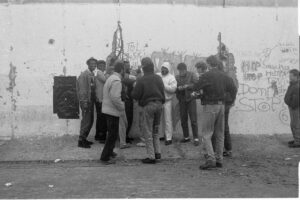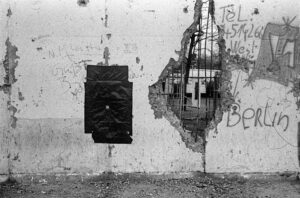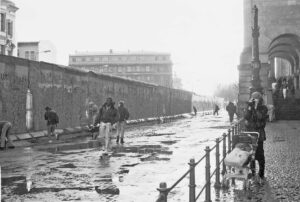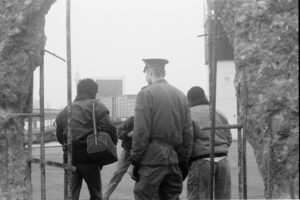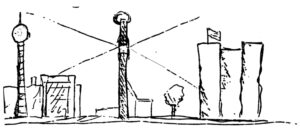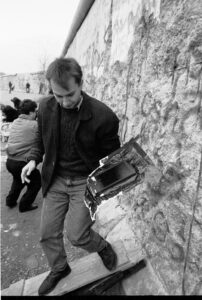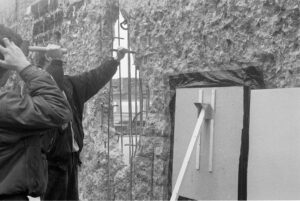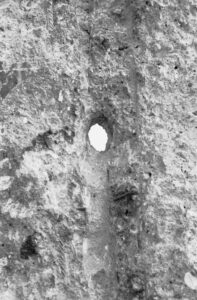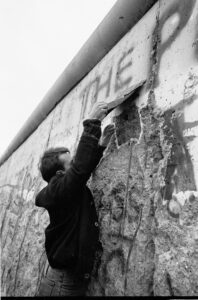The rapidly changing situation in Berlin during November and December 1989 prompted the artist Marcus Kaiser to travel to the city. The Berlin Wall was already full of numerous openings, holes and breaches, which had been hammered into it by both Berliners and tourists, and Kaiser used some of these holes to encase a camera obscura. At each of the selected openings along the border he took photographs in both directions, east and west. From the Reichstag Building to Potsdamer Platz and the Prinz-Albert-Gelände (ruin of the former Gestapo headquarters) to the border crossing on Prinzenstraße. The final photographic work consists of seven large-format diptychs.
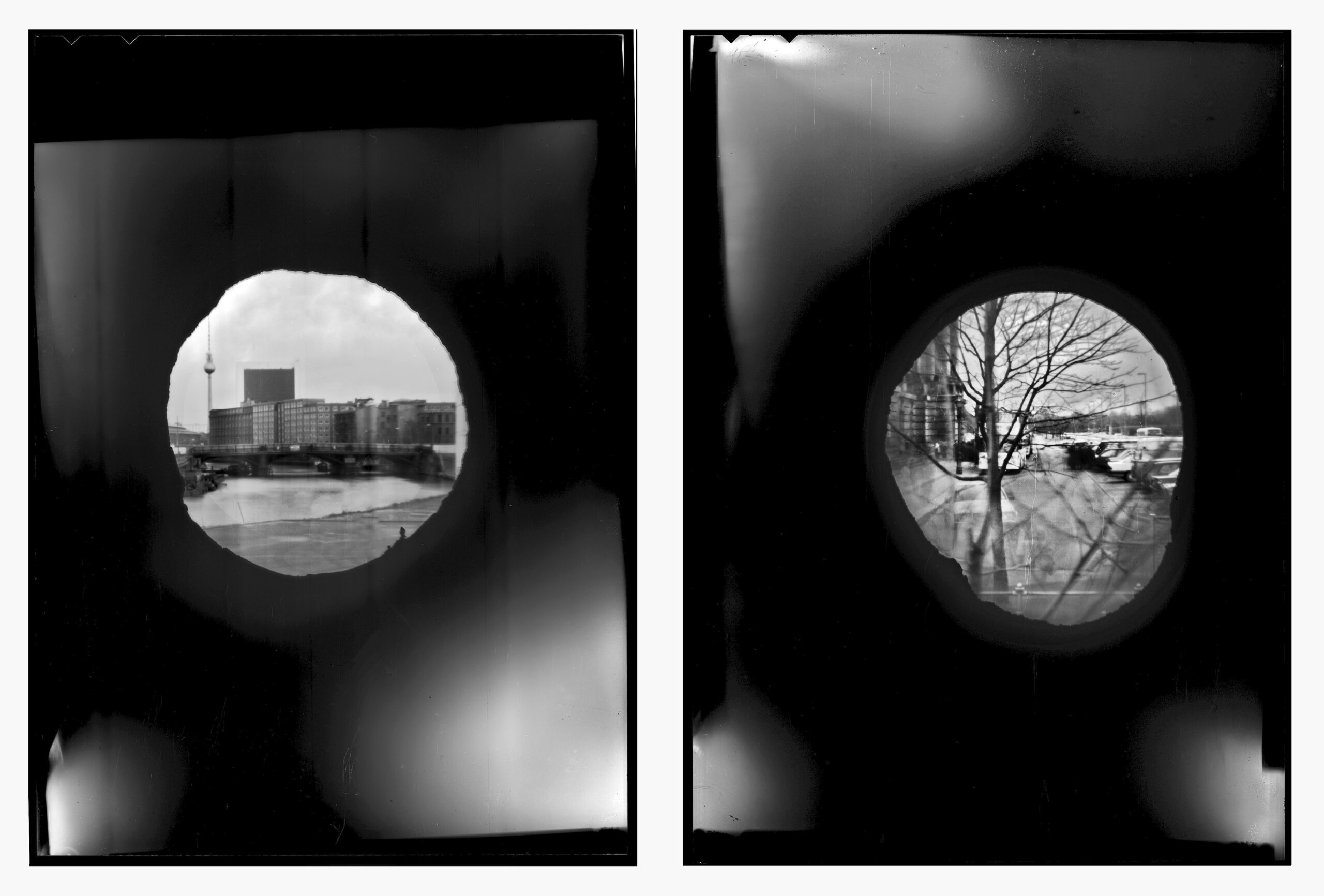
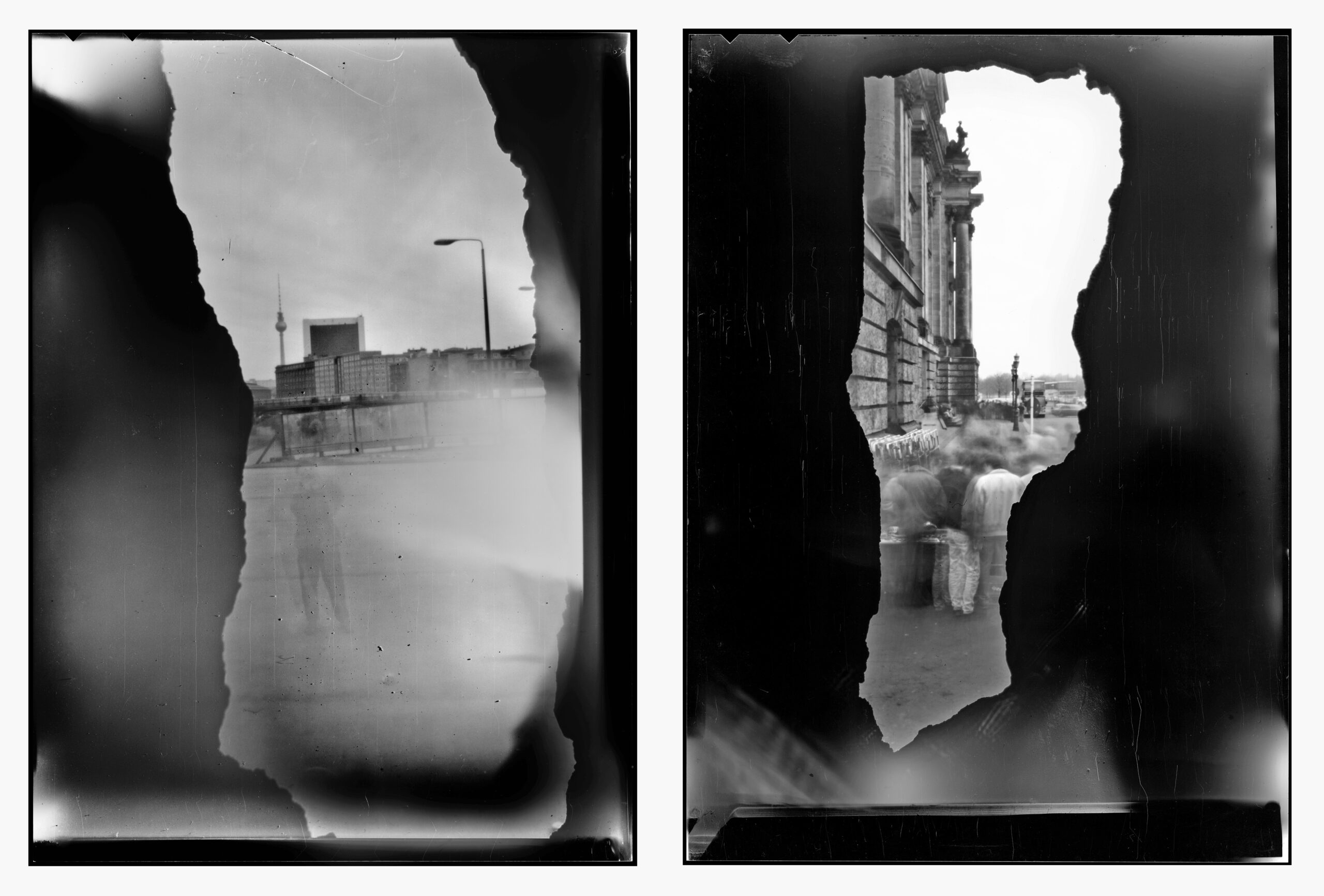
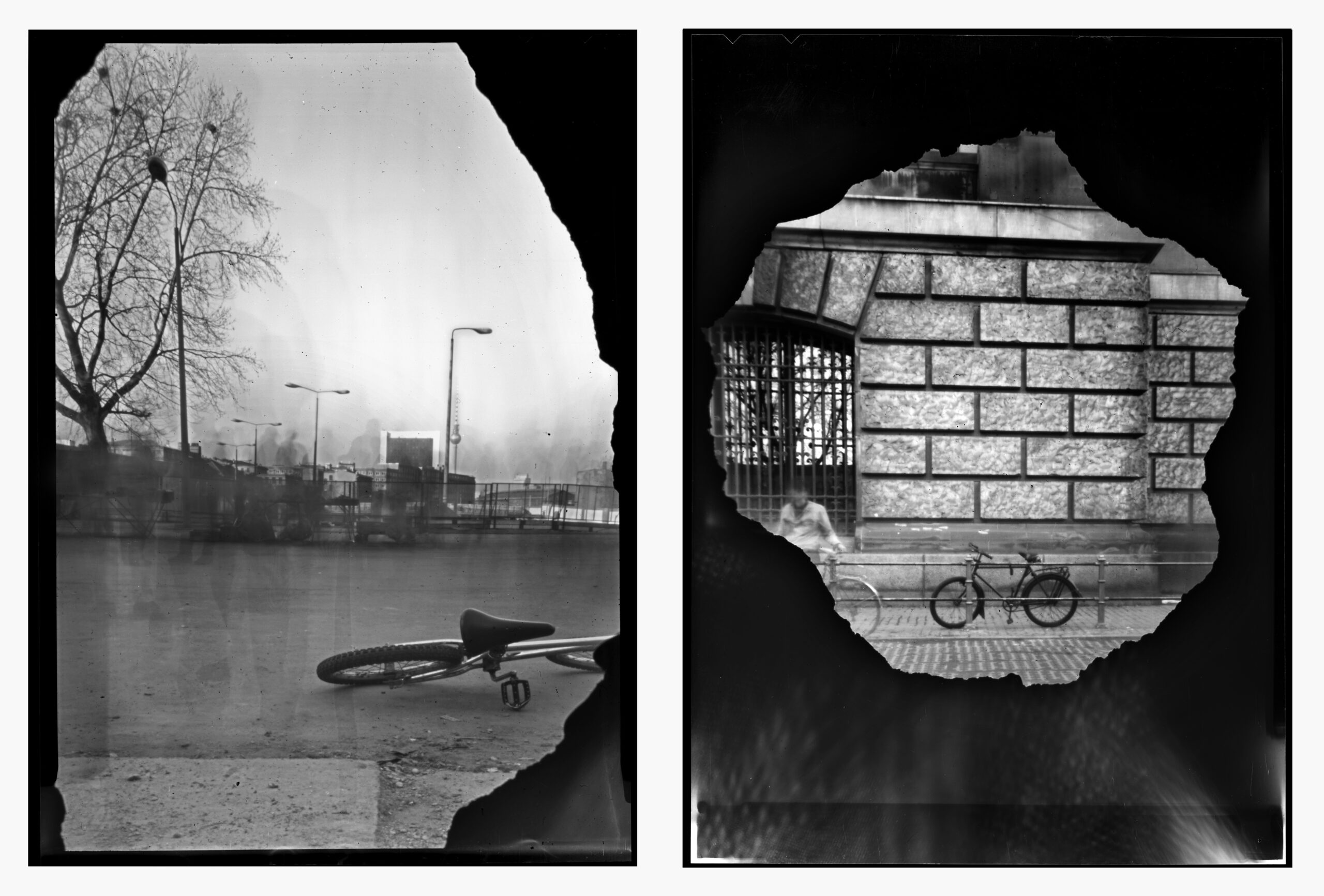
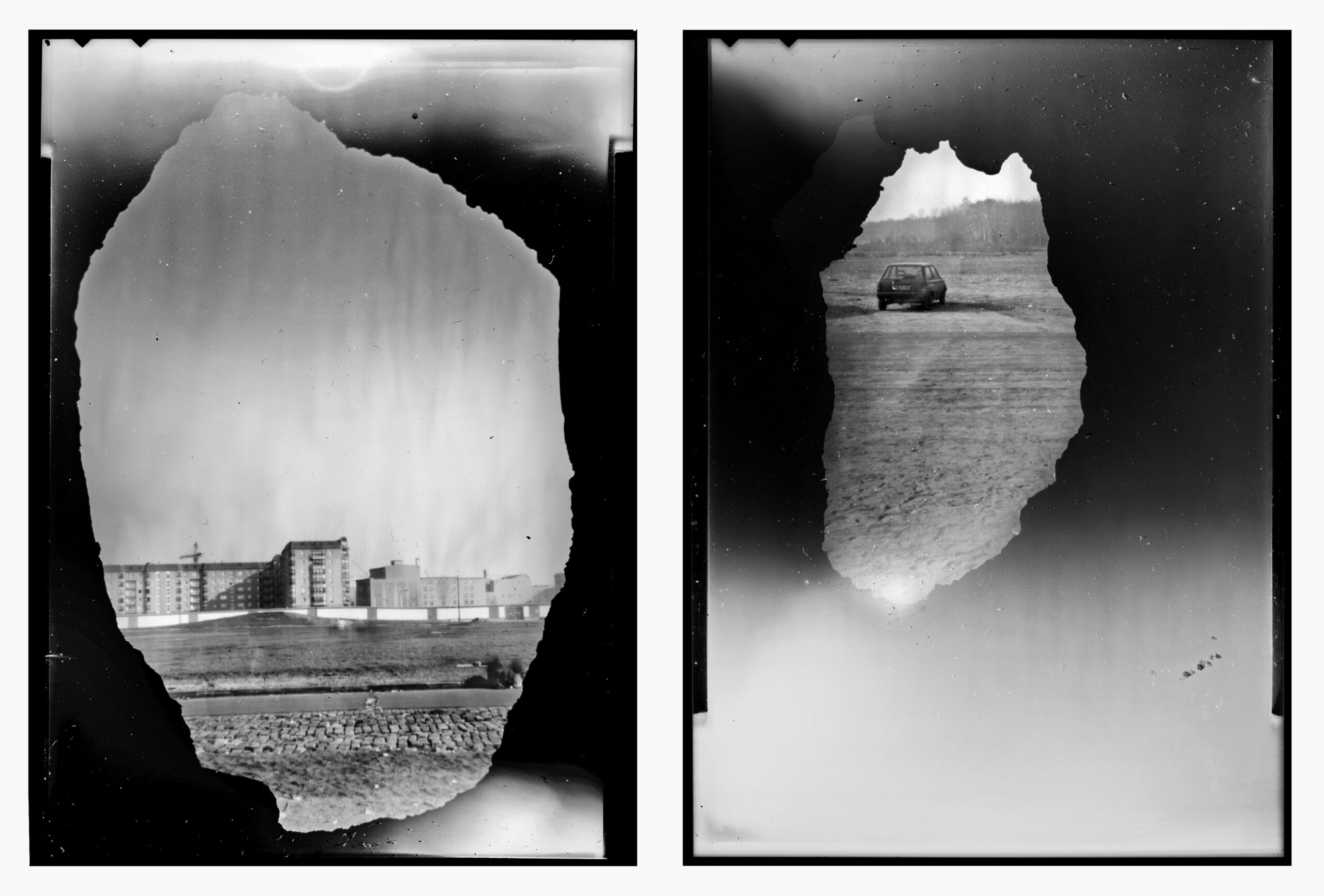
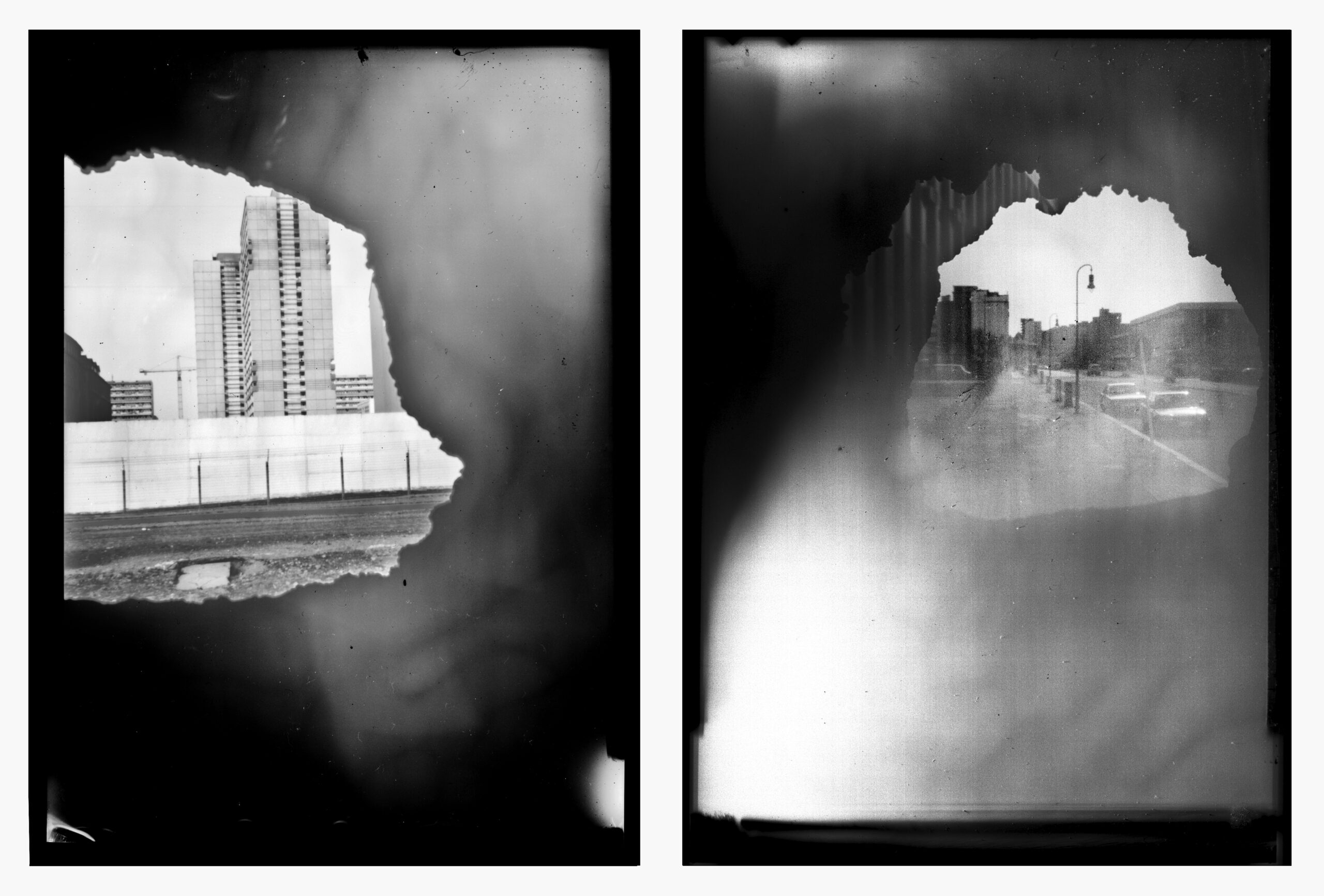
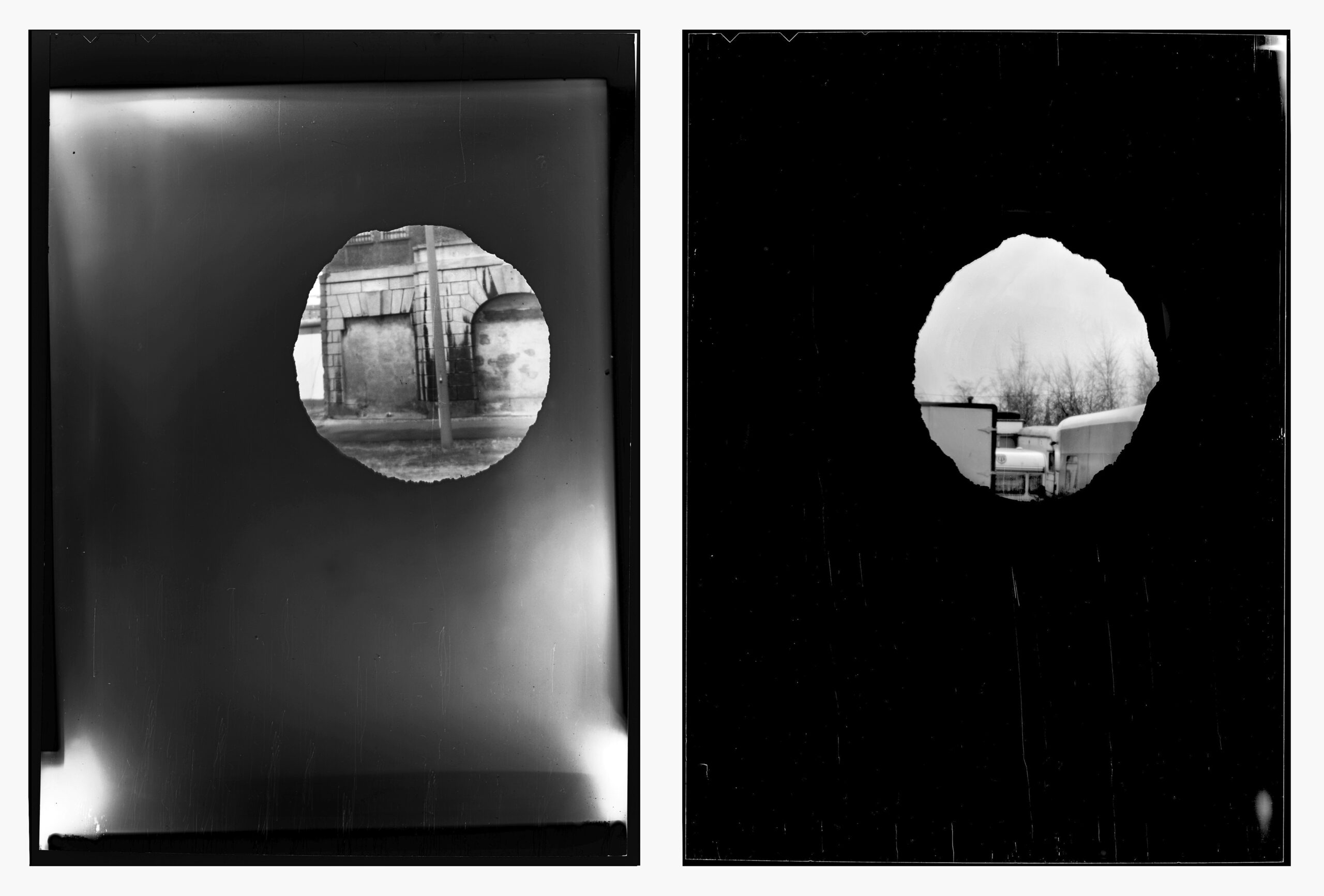
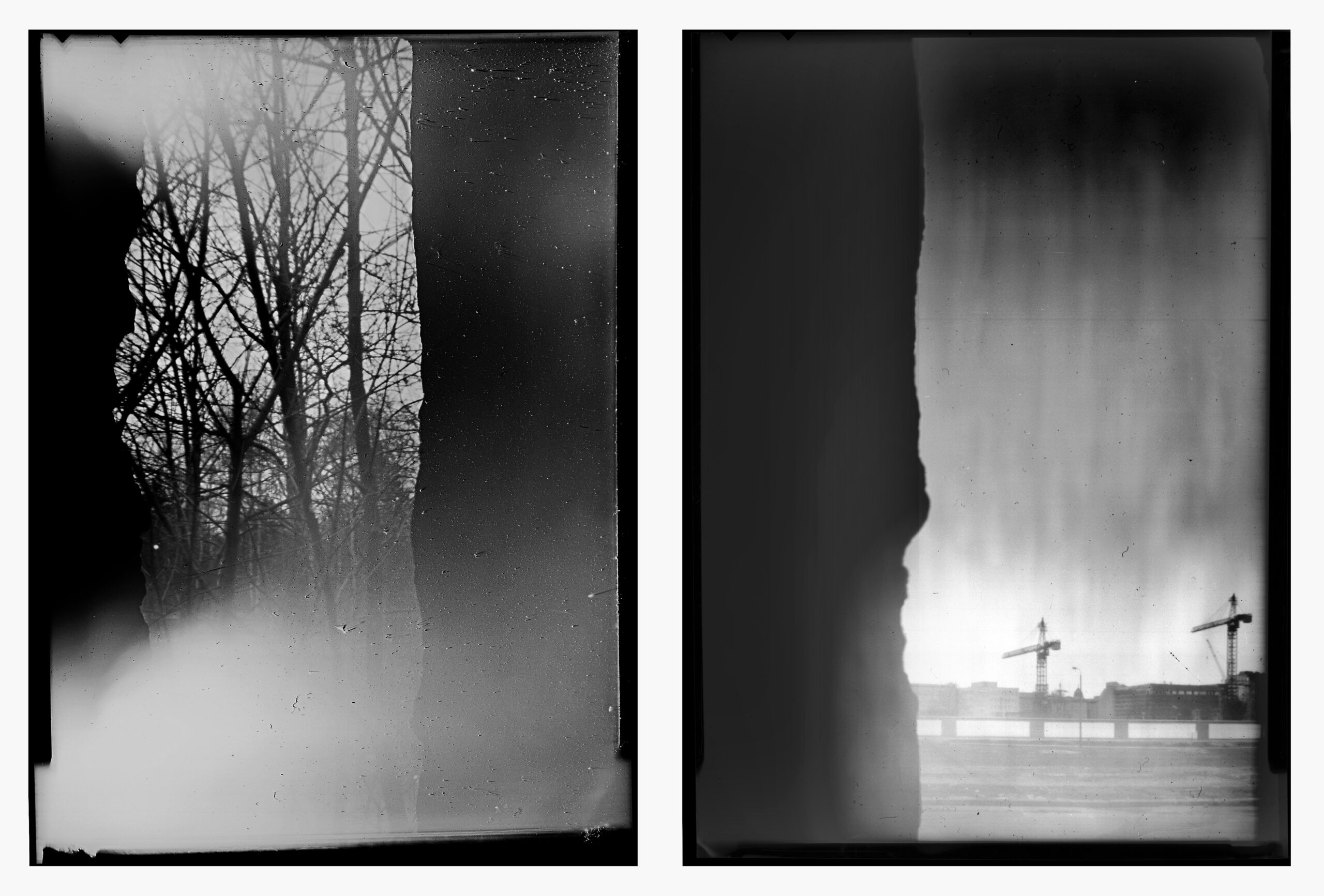
- Marus Kaiser, Berlin Wall Marcus Kaiser, 1989 Photograph by Ulrich Ricker.
- Marcus Kaiser taking an exposure Berlin Wall, 1989 B&W Print, 18×24 cm Marcus Kaiser
- Wall Views Documentation Photographs Berlin Wall, 1989, Marcus Kaiser
- Potsdamer Platz Berlin Wall, 1989 B&W Print, 18×24 cm
- Wall Views Documentation Photographs Berlin Wall, 1989, Marcus Kaiser Denn die Evolution, das Handeln, ein geschichtlicher Ablauf, eine Bewegung, eine Erzeugung von Sinn können nicht ohne Unterscheidungen auskommen, es sind dies jedoch Millionen von Unterscheidungen. Bei der Ideologie besteht das Problem darin, dass sie, sobald sie sich als Ideologie formiert und sichtbar wird, bereits eine Ruine ist, da nur eine Unterscheidung getroffen wurde, in welcher sie verharrt und die einen Stillstand beschwört, den Verfall von vornherein impliziert und das Reale bereits mit dem Tod eingetauscht hat. Die Ideologie feiert ihren eigenen Tod, indem sie, „wie die Camera Obscura, die Realität auf den Kopf stellt“ und versucht, den Stillstand bis ins Unendliche hinauszuzögern. -Im Blick der Bilder-, 2023
- Opening the film cassette for exposure Berlin Wall, 1989, Marcus Kaiser Berlin Wall, 1989 B&W Print, 18×24 cm
- Wall Views Documentation Photographs Berlin Wall, 1989 B&W Print, 18×24 cm Marcus Kaiser
- Medium, Pencil on paper, 1989, 21×30 cm Pencil sketch of the camera198921x30 cm
- Wall Views Documentation Photographs Berlin Wall, 1989, Marcus Kaiser
- Wall Views Documentation Photographs Berlin Wall, 1989, Marcus Kaiser
- Berlin Wall Camera Obscura by Marcus Kaiser Berlin Wall Ideology Photography Laws Form Distinction Void Concept Art
- Reichstag Berlin Wall, 1989 B&W Print, 18×24 cm Marcus Kaiser
- Wall Views Documentation Photographs Berlin Wall, 1989, Marcus Kaiser
- (un)marked space, boundary, Pencil on paper, 1989, 21×30 cm Pencil sketch of the camera198921x30 cm
- Marcus Kaiser with the plan film cassette Berlin Wall, 1989 B&W Print, 18×24 cm Marcus Kaiser
- Exposure test directly on photographic paper Berlin Wall, 1989 B&W Print, 18×24 cm
- Hole in the Wall Berlin Wall, 1989 B&W Print, 18×24 cm
- Marcus Kaiser, Berlin, 1989 Berlin Wall, 1989 B&W Print, 18×24 cm Marcus Kaiser Berlin Wall, 1989 B&W Print, 18×24 cm
Re-Entry
In my works Mauerblicke/Wall Views (1989) and optische Hütte (2004), I explore the temporary intersections between space, image and perception. With Mauerblicke/Wall Views, I responded directly to the historical events of the fall of the Berlin Wall and used the Berlin Wall as a medium of visibility: the camera obscura established the wall itself as a border space in which the image was created from both sides (East/West) and their breaches in the wall. It is characteristic that the camera itself is depicted in the image during the recording process – the traces of wall dust and the visibility of its housing materially reflect the boundary conditions of the image space; the distinction between image and apparatus, between inside and outside, thus acquires a new quality of visibility.
With the ‘optical hut,’ I continue this image-theoretical investigation. The seeing subject is located within the apparatus – in the image space itself. The projection of the outside world into the interior transforms the difference between the perceiver and the perceived, between inside and outside, into a continuous process of mediation that consists not of static identity but of dynamic reflection and reversal.
It is precisely through this double connection of the image with its condition – in ‘Wall Views’ through the visible housing and the wall dust, in the ‘optical hut’ through the placement of the subject in the image space itself – that, according to Luhmann, re-entry becomes not only tangible but methodologically emphasised: the distinction between boundary and visibility, between subject and image, is brought back into the image and the space of perception itself and reflected there. The image always refers to the difference it creates and which underlies it; it is characterised by the ‘re-entry’ of its own structure as something visible and experiential. In my work, the productive tension between difference and mediation, apparatus and perception, subject and image becomes the actual subject matter – and re-entry forms the epistemological core of this image-scientific and aesthetic reflection.
The integration of both approaches deepens the epistemological core of my work by reflexively linking difference, physicality and image event and making them experiential in the image, both scientifically and artistically.
Marcus Kaiser, 2022
See also:
https://laong.org/las-dos-caras-de-la-moneda-romulo-pena/
Third-order observation
From my perspective as an artist and image researcher, I conceived the project ‘Mauerblicke/Wall Views’ as an experimental installation designed to trigger a process of cognition that goes far beyond the mere viewing of images.
By integrating the camera obscura directly into the substance of the Berlin Wall, the border itself became the medium, the imaging instance. The resulting diptychs not only reflect the distinction between East and West, but also literally reveal the act of creating this difference in the imaging process. The wall ‘photographs’ – the medium becomes the message by inscribing itself into the image production, observing and reflecting on itself.
This installation was conceived as an artistic experiment from the outset. I wanted to find out whether the resulting pairs of images – the diptychs – could actually trigger a gain in knowledge among the audience when viewed later: does the viewer become a third-order observer when confronted with these medially mediated border images? In other words, can they perceive not only the images and their aesthetic structure, but also the constructed self-observation of the border and the process by which ideology is created and deconstructed through medium and form?
The theoretical framework for this is based on Niklas Luhmann’s systems theory and George Spencer Brown’s ‘Laws of Form’. In the medium of the image, the wall becomes an operative distinguishing feature, a ‘sign’ (Spencer Brown). The camera obscura functions as a medium of distinction by not simply depicting the border, but by establishing operative differences and thereby activating the observation of observation (‘second-order observation’) and even a third-order observation. This means that the audience not only sees the border, but also recognises it.
